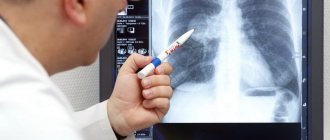Stroke
31457 August 11
IMPORTANT!
The information in this section cannot be used for self-diagnosis and self-treatment.
In case of pain or other exacerbation of the disease, diagnostic tests should be prescribed only by the attending physician. To make a diagnosis and properly prescribe treatment, you should contact your doctor. We remind you that independent interpretation of the results is unacceptable; the information below is for reference only.
Coagulogram (screening): indications for use, rules for preparing for the test, interpretation of the results and normal indicators.
Indications for the purpose of the study
Coagulogram (hemostasiogram) is a comprehensive hematological study aimed at assessing the state of the hemostasis system (blood clotting), or blood clotting indicators. The hemostasis system includes blood cells (platelets) and specific substances (clotting factors) dissolved in blood plasma and contained in platelets. When the integrity of the vessel wall is violated, the coagulation system is activated and a blood clot is formed, preventing blood loss.
Some time after the bleeding stops, fibrinolysis begins - the process of dissolving the blood clot after restoring the damaged vessel wall to resume blood flow.
Indications for a coagulogram are conditions accompanied by increased bleeding or, conversely, increased thrombus formation.
Increased bleeding leads to hemorrhagic syndrome. It is manifested by the formation of hematomas, pinpoint hemorrhages under the skin (petechiae), bleeding of the mucous membranes (nosebleeds, bleeding from the gums), the appearance of blood in the stool, urine, prolonged menstrual bleeding, as well as possible hemorrhages in the internal organs and body cavities. The most dangerous manifestation of hemorrhagic syndrome is hemorrhage in the brain - hemorrhagic stroke, which can lead to rapid impairment of brain function, including death. A hereditary disease associated with blood clotting disorders (decreased or absent clotting factors) is called hemophilia.
The opposite situation - thrombosis - is the formation of blood clots (thrombi) inside blood vessels, preventing the free flow of blood.
People with obesity, diabetes mellitus, heart rhythm disturbances (the most significant of which are atrial fibrillation and flutter), low physical activity, and patients after major operations (for example, joint replacement, heart valve replacement, emergency operations, etc.) are at risk of increased thrombosis. , with varicose veins, previous myocardial infarctions, strokes, and various autoimmune diseases.
Thrombosis in a certain area of the vascular bed is accompanied by an acute or gradual disruption of the blood supply to any organ with disruption of its functions and subsequent tissue necrosis.
In addition to the above conditions, a coagulogram is performed before operations to assess the risk of bleeding, when prescribing certain medications, and also necessarily in case of liver diseases, since most of the proteins of the blood coagulation system are synthesized in this organ.
Coagulogram - what is it?
Many patients needlessly begin to worry when they hear from their attending physician such unusual at first glance words as coagulogram or otherwise hemostasiogram . So what kind of coagulogram analysis is this and why is it taken?
First of all, it is worth noting that this is a fairly common method in modern medicine for studying the functioning of the hemostatic system of the human body, which is responsible for such important vital functions as stopping bleeding when blood clots or blood vessels , as well as maintaining the normal fluid state of the blood.
Hence the answer to the question of what a hemostasiogram - a study that determines how well the body’s hemostasis system functions. A blood coagulogram test helps to study such an important blood function as the ability to clot, i.e. formation of a blood clot.
Having received the results of coagulation , the attending physician can predict in advance the outcome of the operation or childbirth. Information about blood clotting is vital in emergency situations, for example, when a person is injured, when seconds count and you need to stop the bleeding .
Therefore, you hardly need to worry too much about how much this research costs. After all, the price of a hemostasiogram cannot be compared with the confidence that the patient will be alive and healthy.
Indications for prescribing such an analysis as a hemostasiogram are the presence of the following diseases in the patient:
- intestinal thrombosis;
- stroke;
- thromboembolism
- vascular thrombosis and varicose veins of the lower extremities;
- chronic cirrhosis
- gestosis;
- inflammatory processes in the acute stage;
- hemorrhagic pathologies, for example thrombocytopenia , hemophilia or von Willebrand disease .
In addition, such an analysis is necessarily prescribed to determine the rate of blood clotting in preparation for planned operations, for example, cesarean section, as well as during pregnancy to assess the state of hemostasis and before spontaneous childbirth . Every woman in labor must have a blood test such as a coagulogram in her exchange card.
Human hemostasis system
Having determined what a hemostasis test is, it is worth understanding in more detail such a concept as blood clotting . Perhaps we should start with a definition. So, the hemostasis system of the human body is the most important biological system, the main functions of which can be considered to be the preservation of basic blood parameters, as well as stopping bleeding.
It is not for nothing that the human body is called the whole universe and is compared to a complex mechanism. And the hemostasis system can serve as a striking example of how ingeniously people are designed. Blood is a unique biological fluid that can literally work miracles in our body.
It not only circulates through the vessels, but also, unnoticed by a person, restores veins and arteries throughout his life due to its ability to form blood clots or dense clots, i.e. roll.
There are three main components of the human hemostasis system:
- endothelial cells (the inner layer consisting of flat cells lining lymphatic and blood vessels, as well as the cavities of the heart), which, when vascular walls rupture or other damage, are capable of releasing biologically active components such as prostacyclin , thrombomodulin and nitric oxide . They, in turn, trigger the process of blood clot formation.
- Platelets or blood platelets that have the ability to “stick together” with each other in order to subsequently form a primary hemostatic plug .
- Plasma factors (15 plasma factors in total, most are enzymes ) that, due to chemical reactions, form a fibrin clot , which should finally stop the bleeding.
Summarizing all of the above, we can clearly answer the question of what a blood test for hemostasis shows during pregnancy, in preparation for a planned operation, or during diagnostics. This test gives an idea of how well or poorly a patient's blood is clotting. In other words, how quickly doctors can stop bleeding when it occurs.
Preparation for the procedure
The essence of a coagulogram is to assess the activity of proteins of the blood coagulation system.
Therefore, proper preparation for this analysis is extremely important. Blood is taken on an empty stomach; the last meal should be at least 8-10 hours before the test. It is recommended to exclude excess amounts of fatty, sweet and protein foods. The drinking regime remains normal. The day before it is necessary to avoid stressful loads and intense sports. If the patient is taking any medications that affect coagulogram parameters, then, depending on the goals set for the study, it is necessary to either continue or stop taking them a few days before. This should be discussed with your doctor before taking the test.
If you need urgent results, you can contact the INVITRO offices, where express diagnostics are carried out. In this case, the analysis will be ready in about 2 hours.
Some of the proteins of the blood coagulation system are acute phase proteins. They are produced during stress, which includes not only physical and emotional stress, but also illness. Consequently, any persistent or short-term, but intense stress in the body can lead to changes in coagulogram parameters.
Dehydration (dehydration) is one of the reasons for blood thickening and an increase in the concentration of coagulation factors, which also leads to a distortion of the result.
The state of the blood coagulation system changes during pregnancy, both in the direction of increasing and decreasing the activity of a number of proteins.
The use of many medications affects the blood coagulation system. Thus, the first generations of oral contraceptives lead to an increased risk of thrombosis, and anticoagulants lead to bleeding. The list of drugs that affect the activity of the coagulation system is huge. When receiving any drug therapy, you should first consult with your doctor about the possible effect of a particular drug on the test result.
Taking certain medications by a pregnant woman, for example, warfarin, rifampicin, phenytoin, barbiturates, affects the production of clotting factors in the fetus. The child may subsequently be at high risk of bleeding.
General information
Every qualified doctor knows that it is best to begin the treatment of any patient by collecting an anamnesis, which is nothing more than a collection of information about the state of a person’s health.
As a rule, any medical examination begins with asking the patient himself about previous diseases or surgical interventions, allergic reactions or hereditary predisposition to certain ailments, and so on.
Then the doctor prescribes a series of laboratory tests or simply tests that will help supplement the anamnesis with information about the development of the disease, as well as information necessary for choosing a treatment method or further diagnosis.
Coagulological studies (abbreviated as coagulogram ) occupy an important place among laboratory blood tests that are necessarily carried out in preparation for surgery, for example, during a planned cesarean section or during pregnancy .
Coagulogram (screening)
No. OBS103Comprehensive studies
Hemostasiogram (coagulogram), screening A basic set of tests used for screening assessment of the state of the blood coagulation system.
Up to 1 business day
RUB 1,360 Add to cart
No. OBS109Comprehensive studies
Hemostasiogram (coagulogram) extended This set of tests is used for a detailed assessment of hemostasis disorders: if thrombophilia is suspected, the risk of developing thromboembolism and/or disseminated intravascular coagulation (DIC), or the patient’s severe general condition.
Up to 1 business day
RUB 3,790 Add to cart
You can take a coalogram at the nearest INVITRO medical office. A list of offices where biomaterial is accepted for laboratory research is presented in the “Addresses” section.
The blood coagulation system is primarily an enzymatic system that provides external, internal and general coagulation pathways. These mechanisms are successively replaced, but they can also occur independently of each other.
The screening coagulogram includes the following indicators:
- prothrombin (prothrombin time, prothrombin (according to Quick), INR - international normalized ratio);
- fibrinogen;
- APTT (activated partial thromboplastin time);
- thrombin time.
These indicators are basic and allow you to evaluate all coagulation pathways.
Complexes with this research
Coagulogram Study of the functional state of hemostasis RUB 2,020 Composition
Planning pregnancy. Clinical indicators 6,630 ₽ Composition
Female infertility Analysis of women's reproductive health 16,210 RUR Composition
IN OTHER COMPLEXES
- Examination during pregnancy. 3rd trimester 9,620 RUR
- Examination during pregnancy. 1st trimester 16,690 RUR
- Miscarriage RUB 40,070
- Joining IVF RUB 23,020
- Extended coagulogram RUB 4,150
Normal indicators
| Index | Reference value | Unit |
| Prothrombin time | 9,0–15,0 | sec. |
| Prothrombin according to Quick | 78–142 | % |
| INR | depends on the presence of concomitant pathology in the patient for which he receives anticoagulant therapy | |
| APTT | 25,4–36,9 | sec. |
| Thrombin time | 10,3–16,6 | sec. |
| Fibrinogen | 2,00–4,00 | g/l |
| up to 5.6 (2nd and 3rd trimester of pregnancy) | g/l | |
Coagulogram during pregnancy
What is a coagulogram during pregnancy? This is the same coagulogram that is necessarily prescribed to women during pregnancy, as well as immediately before preparing for childbirth.
During pregnancy, the norm for all blood clotting test indicators does not correspond to generally accepted values for the body of a healthy adult.
This is due, first of all, to the fact that the hemostasis system of a pregnant woman undergoes serious changes, as does her entire body as a whole due to the emergence of another blood circulation - the uteroplacental. progesterone predominates, also play an important role .
It is noteworthy that during pregnancy the activity of blood clotting factors such as 7,8 and 10, as well as fibrinogen, increases significantly. This is a kind of natural protective mechanism designed to help increase the chances of a favorable birth outcome.
Fibrin fragments are deposited on the walls of blood vessels and thus the fibrinolysis system is suppressed. This allows the female body to be safe in case of placental abruption or miscarriage, uterine bleeding and the formation of intravascular blood clots.
Decoding coagulogram indicators during pregnancy
| Abbreviated name of the indicator, unit of measurement | I trimester of pregnancy | II trimester of pregnancy | III trimester of pregnancy |
| RFMK, ED | 78-130 | 85-135 | 90-140 |
| Platelets, *109/l | 301-317 | 273-298 | 242-263 |
| Antithrombin III, g/l | 0,222 | 0,176 | 0,155 |
| AVR, with | 60,1-72,6 | 56,7-67,8 | 48,2-55,3 |
| Prothrombin index, % | 85,4-90,1 | 91,2-100,4 | 105,8-110,6 |
| Fibrinogen, g/l | 2,91-3,11 | 3,03-3,46 | 4,42-5,12 |
| APTT, s | 35,7-41,2 | 33,6-37,4 | 36,9-39,6 |
Decoding the result
I. Quick's prothrombin, prothrombin time, and international normalized ratio (INR) reflect the activity of the extrinsic coagulation pathway.
- Prothrombin time
is the time of blood clotting after the addition of substances (thromboplastin with calcium) to the plasma that trigger the extrinsic blood coagulation pathway. Time is measured in seconds (sec.). The longer the prothrombin time, the lower the activity of coagulation factors. - Prothrombin according to Quick
is considered a more objective indicator of the external pathway, since during the analysis the clotting time is studied depending on the different concentration of coagulation factors in the blood obtained by diluting the test material in the laboratory. The indicator is measured as a percentage (%). The longer blood clotting occurs, the lower the Quick prothrombin percentage. - The international normalized ratio (INR)
is a prothrombin test standardized in accordance with international recommendations. It is calculated using a certain formula. The higher the INR, the longer it takes for a blood clot to form.
Prothrombin time, prothrombin according to Quick and INR with normal fibrinogen content and activity also reflect the activity of the prothrombin complex (II, V, VII, X blood coagulation factors).
When prescribing therapy with anticoagulants from the group of vitamin K antagonists (warfarin), there is an increase in INR and prothrombin time and a decrease in prothrombin according to Quick. Other causes of these changes may be vitamin K deficiency (for example, with hemorrhagic disease of the newborn), hereditary deficiency of factors II, V, VII, X, liver and intestinal diseases. The opposite picture, i.e., a decrease in INR, a decrease in prothrombin time and an increase in prothrombin according to Quick, occurs in conditions accompanied by increased blood clotting: thrombosis, blood thickening during dehydration, when taking oral contraceptives, barbiturates.
II. Activated partial thromboplastin time (aPTT)
with normal content and activity of fibrinogen, it characterizes the internal pathway of blood coagulation, which includes the activity of factors II, V, VIII, IX, X, XI, XII. APTT is determined by adding reagents that trigger this clotting pathway to a blood sample and measuring the time it takes for the blood to form a clot. Measured in seconds (sec.). The slower the blood clotting, the longer the APTT.
This indicator is used to monitor therapy with heparin (direct anticoagulant), and an increase in the aPTT value is noted. Other causes of increased time include hereditary and acquired deficiencies of intrinsic pathway coagulation factors, for example, in hemophilia, hemorrhagic disease of the newborn, liver and intestinal diseases, some autoimmune diseases, etc. The reasons for increased aPTT are the same as for Quick's prothrombin.
III. Thrombin time and fibrinogen reflect the overall, or final, pathway of blood clotting.
- Fibrinogen
is blood clotting factor I, a protein synthesized in the liver and converted into fibrin, the basis of the clot during blood clotting. It is also an acute phase protein. It is measured in grams per liter (g/l). With increased thrombus formation and various inflammatory diseases, the synthesis of this protein increases. In case of liver diseases, hereditary fibrinogen deficiency, etc., its concentration decreases. - Thrombin time
is the blood clotting time necessary for the formation of a fibrin clot when thrombin is added to the plasma - an enzyme (factor IIa), which appears when blood coagulation factors interact when a vessel is damaged. Thrombin time depends on the level and activity of fibrinogen. Measured in seconds (sec.).
Changes in thrombin time generally correlate with fibrinogen levels. However, with such a hereditary disease as dysfibrinogenemia, i.e., a violation of the functional activity of fibrinogen, an increase in thrombin time and a coagulation disorder occurs, despite the normal amount of fibrinogen in the blood.
How to take a coagulogram?
We talked about what a coagulogram is and why this test is taken. Now let’s figure out how to properly undergo a hemostasiogram so that, based on the results obtained, the doctor can make the right conclusion and choose an effective treatment plan.
So, if you need to do a blood clotting test, then remember the following rules:
- blood is donated exclusively on an empty stomach, it is better that more than 12 hours have passed since your last meal;
- on the eve of the analysis, you should not eat too spicy food, you should also refrain from smoked meats and overly fatty foods;
- It is strictly prohibited to drink any alcohol, even if the drink contains a small percentage of it;
- don't smoke;
- It is recommended not to take medications before the analysis, and if medications are vital, you should definitely notify the laboratory technician about this and indicate which medications are prescribed to you.
A standard hemostasiogram can be done in most public clinics, and an expanded or detailed analysis is more often available in paid medical institutions. For example, in the Invitro laboratory, a coagulogram can be done quite quickly. As a rule, the test result can be collected within a couple of days. This is due to the need for a number of chemical reactions that require a certain amount of time, which simply cannot be avoided.
However, in any case, you will receive the result of a paid analysis much faster than in a government institution, where the laboratory is heavily loaded due to the influx of patients or may not have certain reagents necessary for the study. The cost of the analysis depends on the number of parameters that need to be studied and varies from 1000 to 3000 rubles.










